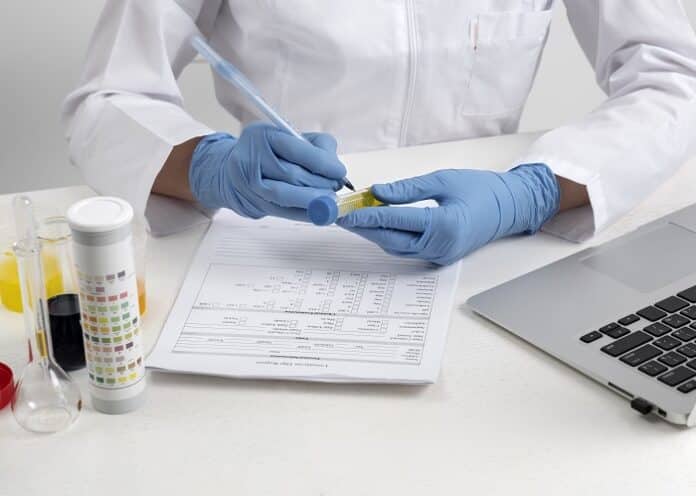Knowing the details of urine drug testing procedures is essential for employees in many workplaces today. Urine drug tests are common due to their effectiveness in detecting recent drug use. These tests are often chosen for their reliability and broad detection range, making them a popular choice for employers seeking to maintain a safe and productive work environment.
During a urine drug test, employees are usually provided with a specimen cup and instructed to provide a sample in a private setting. This sample is then analysed for traces of specific drugs. Employees need to be aware of their rights and the company’s testing policy, making sure to understand the potential consequences of a positive result.
Using professional urine drug tests can ensure accurate and legally compliant results. Knowing what to expect can help reduce anxiety and ensure the testing process goes smoothly. Understanding the procedures and following the guidelines can make the experience straightforward and less stressful.
Key Takeaways
- Urine drug tests are reliable for detecting recent drug use.
- Tests are done in private settings to ensure accuracy and respect.
- Professional kits ensure compliance and accuracy in testing.
Overview of Urine Drug Testing
Urine drug testing is used widely in the workplace. It helps maintain a safe and productive environment. It is important to understand the purpose and the different types of urine drug tests available.
Purpose of Urine Drug Testing
Urine drug testing is often used to detect the presence of drugs in an employee’s system. This type of testing is essential for maintaining workplace safety and productivity.
It is commonly used in pre-employment screening. Employers want to ensure that new hires do not have a history of drug use.
Post-accident testing is another key use. If an accident occurs, testing can determine if drugs are a factor. Random testing is used to deter ongoing drug use among employees.
When there is reasonable suspicion that an employee is using drugs, testing can confirm it. This helps employers address issues promptly.
Types of Urine Drug Tests
Several types of urine drug tests are commonly used. The most common is the immunoassay test. It is cost-effective and provides rapid results. However, it may not be as accurate as other types.
Gas chromatography-mass spectrometry (GC-MS) is another type. It is more accurate but also more expensive and time-consuming. This test is used to confirm positive results from an immunoassay test.
Employers may also use point-of-care tests. These provide immediate results and can be performed on-site. While convenient, they might not be as reliable as laboratory tests.
Understanding the different types of tests helps in choosing the most appropriate method for various situations.
Urine Drug Testing Procedures
Understanding urine drug testing procedures helps employees know what to expect. Key points include how samples are collected, ensuring the sample’s integrity, the methods used for testing, how results are interpreted, and employee rights regarding privacy.
Sample Collection Process
During the sample collection process, you will be provided with a clean container to collect your urine sample. The collection process is typically carried out in a private bathroom facility to maintain your comfort and privacy. You may be asked to remove outer garments and wash your hands before giving the sample to ensure no contaminants interfere with the test.
The sample is then handed over immediately to the testing official. The official will check the temperature of the sample within four minutes to ensure it is fresh. They will also observe the colour and appearance of the urine. All these steps are taken to prevent tampering or substitution of the sample.
Chain of Custody
The chain of custody is important for maintaining the integrity of the sample from the moment you provide it until the results are reported. Each step the sample undergoes is documented, including who handled it and when. This process minimises the risk of sample tampering or mix-ups and ensures reliable test results.
You will usually sign a form that confirms you provided the sample and that it was sealed in your presence. The sample is often split into two containers: one for the initial test and one for confirmation in case of a positive result. This documentation is essential to ensure the sample’s authenticity and the accuracy of the test results.
Testing Methodologies
Urine drug testing uses various methodologies to detect substances. Common initial tests include immunoassay, a cost-effective and quick screening method. If this test returns positive results, a follow-up test, such as gas chromatography/mass spectrometry (GC/MS), is often used. This confirmatory test is highly accurate and can identify specific substances in the sample.
These methodologies are designed to detect a range of drugs, including cannabis, opioids, amphetamines, and other controlled substances. It’s important to note that some substances may remain in the body longer than others, which can influence detection times. Knowing these procedures helps you understand the thoroughness of the testing process.
Interpreting Results
Interpreting urine drug test results involves understanding what the positive or negative results mean for specific substances. If your initial test is positive, a more precise GC/MS test confirms the presence of the drug. Negative results mean no substances were found or they were below the detection threshold.
Positive results don’t always indicate current impairment. They may reflect past drug use, as some substances are detectable for days or even weeks. It’s important to discuss any prescription medications you’re taking with the testing official, as these can sometimes cause false positives.
Employee Privacy and Rights
Your privacy and rights during urine drug testing are protected by law. Employers must have a written drug testing policy outlining how tests are conducted and what happens following different results. You have the right to know why the test is being performed, how the results will be used, and what your options are if you dispute a positive result.
Your sample should be collected in a way that maximises privacy, and results should be kept confidential and shared only with those who need to know. If you believe your rights have been violated, you can seek recourse through your company’s HR department or relevant legal channels. Being informed of these rights ensures you are treated fairly and respectfully during the testing process.
Conclusion
Knowing what to expect from urine drug testing procedures helps ensure you comply with workplace policies. Be aware of what substances can be detected and how long they remain traceable.
Understanding your company’s drug testing policy is essential. It should be clearly written and communicated. Always provide informed consent before any test.
Urine drug tests are a common method for maintaining a safe and productive work environment. Familiarise yourself with these procedures to avoid any surprises. This knowledge can help you feel prepared and confident during the process.





